Amaryllis
Posted: May 9, 2024 Filed under: Gardening | Tags: Amaryllis, Automatic Gardening, Gulf Coast gardening, Year-round gardening 12 Comments
Most of the Amaryllis I have planted in the garden have stopped blooming. They send up leaves, but no flowers.

This one, which was tagged Specialty Amaryllis “Fairytale”, has been blooming for several years and usually, the “fancy” ones are the weakest. Not only did it make four gorgeous flowers, but it also sent up another bud.

When the first flower stalk was finished, I had four more Fairytale candy-stripped flowers for a couple more weeks.
Finally Flowers!
Posted: April 1, 2024 Filed under: Gardening | Tags: African Hosta, Automatic Gardening, cannas, Drimiopsis maculata, Gulf Coast gardening, Gulf Coast Penstemon, Little White Soldiers, purple Oxalis, Year-round gardening 27 Comments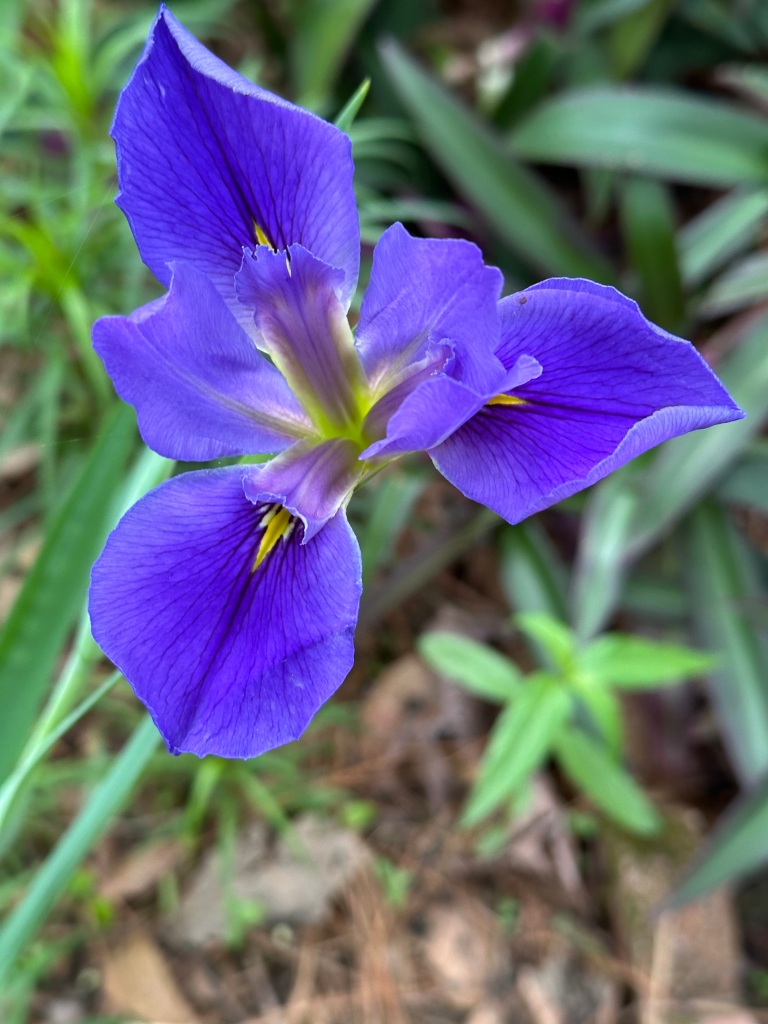
I’ve been slightly jealous of my northern gardener friends’ pictures of daffodils, forsythia, hellebore, and other early bloomers. My plants are finally coming back from the freeze and there are a few in bloom. Above is my “mulch pile” Iris. The Iris arrived in a mulch delivery over 30 years ago and proved to be very hardy. It has managed to reproduce too.

White Soldiers or Drimiopsis maculata is a great plant for this area. It is reliable and spreads. The flowers are not that exciting and after the bloom, they will make bulblets and new plants. They are also called African Hosta and are the closest to a Hosta we can grow here.

One of Cannas has bloomed already. Another plant that reproduces easily.
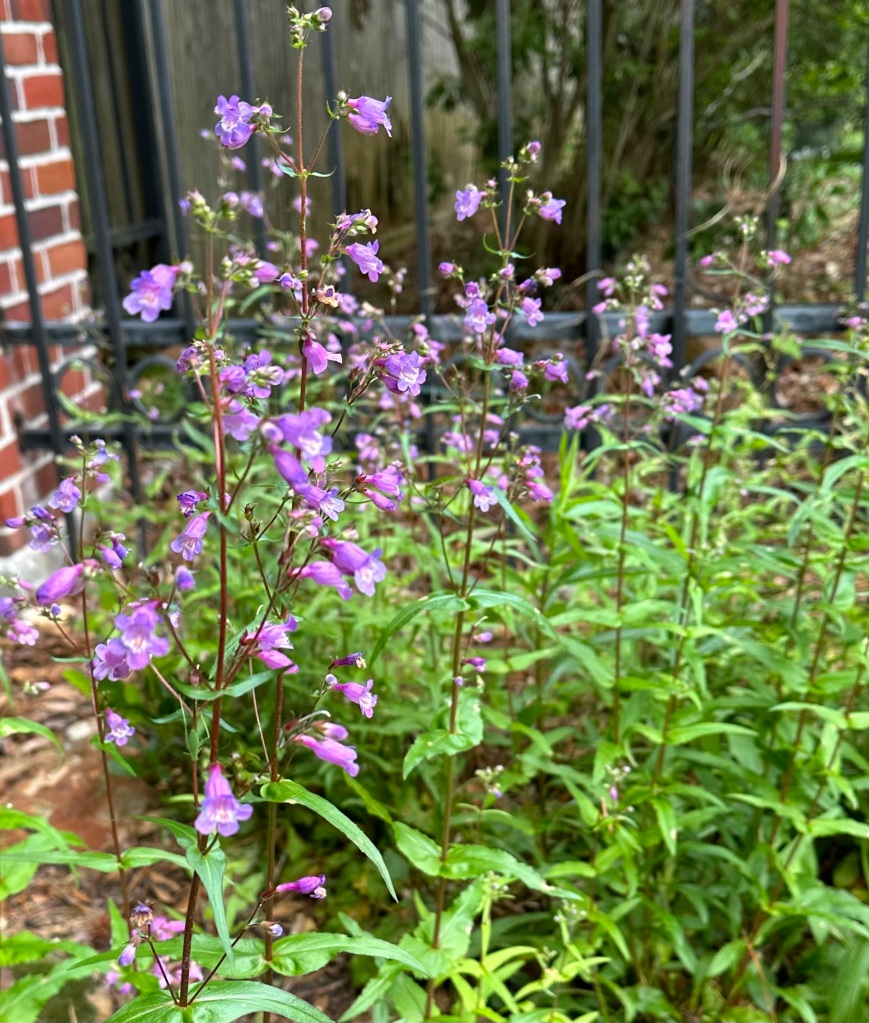
The Gulf Coast Penstemon is really putting on a show. The only thing is that I did not plant them in this bed.
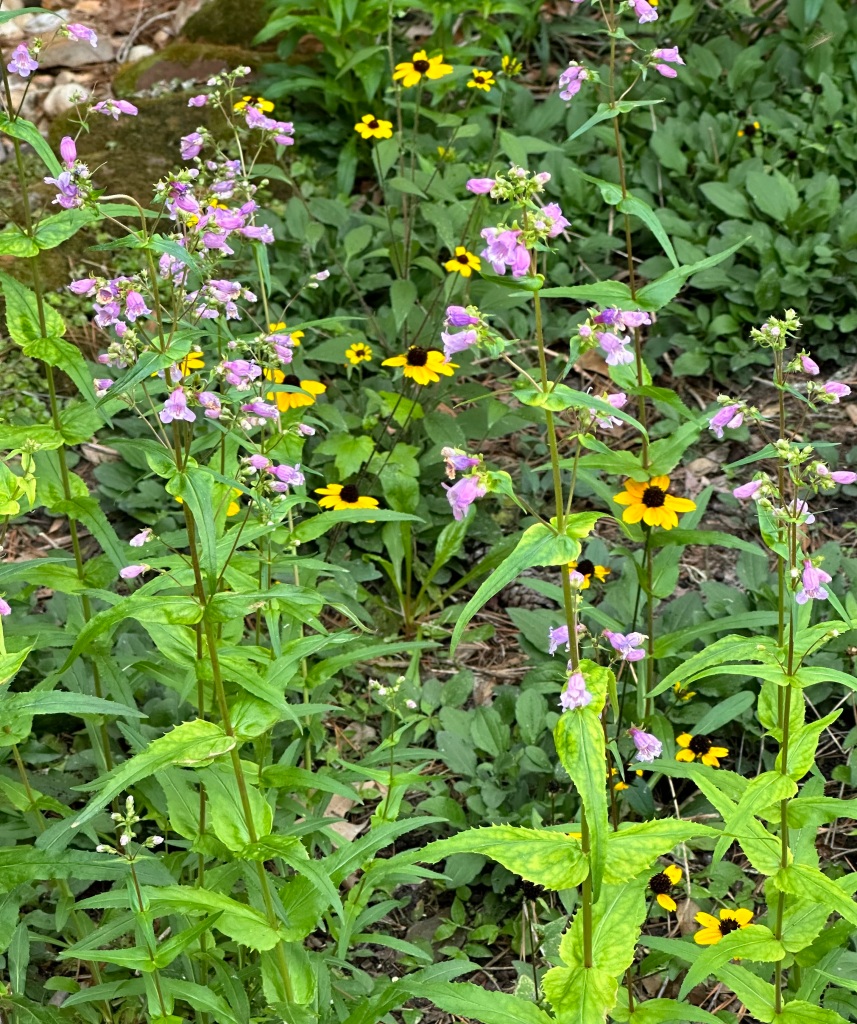
Black-eyed Susans have also started to flower and make a nice spring mix with the Gulf Coast Penstemon.
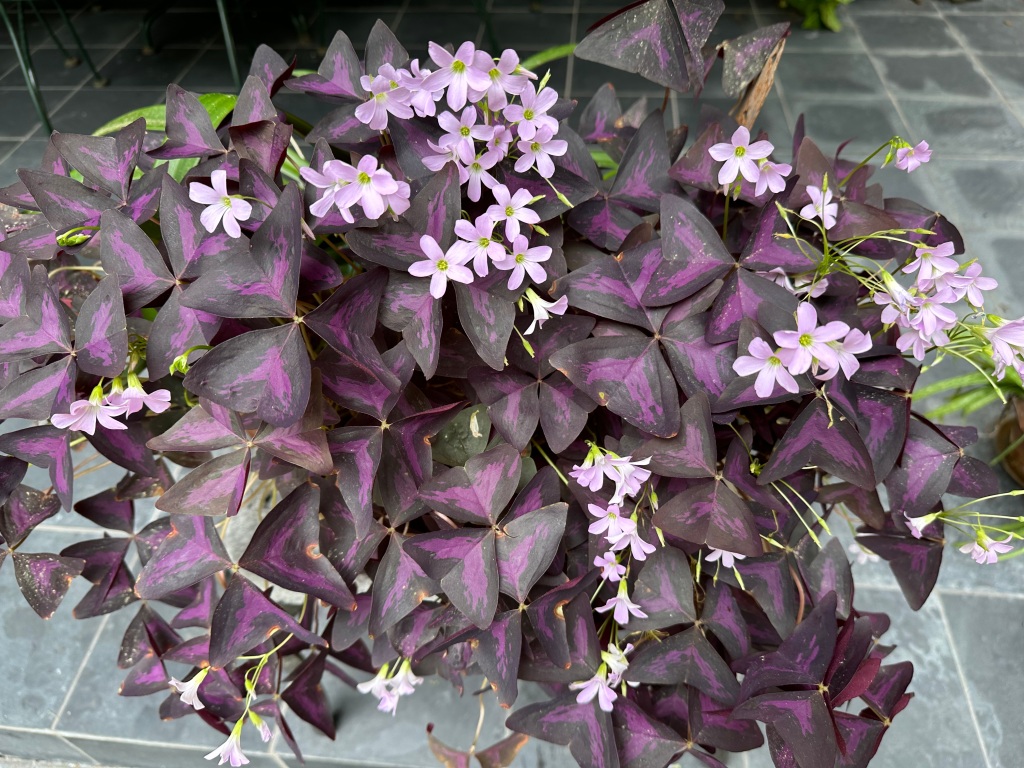
The Purple Oxalis is having a very happy spring. These are in two pots I have next to each other and they make a great display. I also have the Oxalis in two beds and they always come back every year.
Texas Spring
Posted: March 25, 2024 Filed under: Gardening | Tags: Blue Bonnets, Gulf Coast gardening, hardy, Ilex vomitoria, Southern Gardening, Yaupon Holly, Year-round gardening 25 Comments
In Texas, the first sign of spring is the annual blooming of Blue Bonnets. I try to have a few in the garden every year.

The native Yaupon Holly trees’ tiny flowers have opened with a scent that fills the air. Their botanical name Ilex vomitoria comes with a warning.
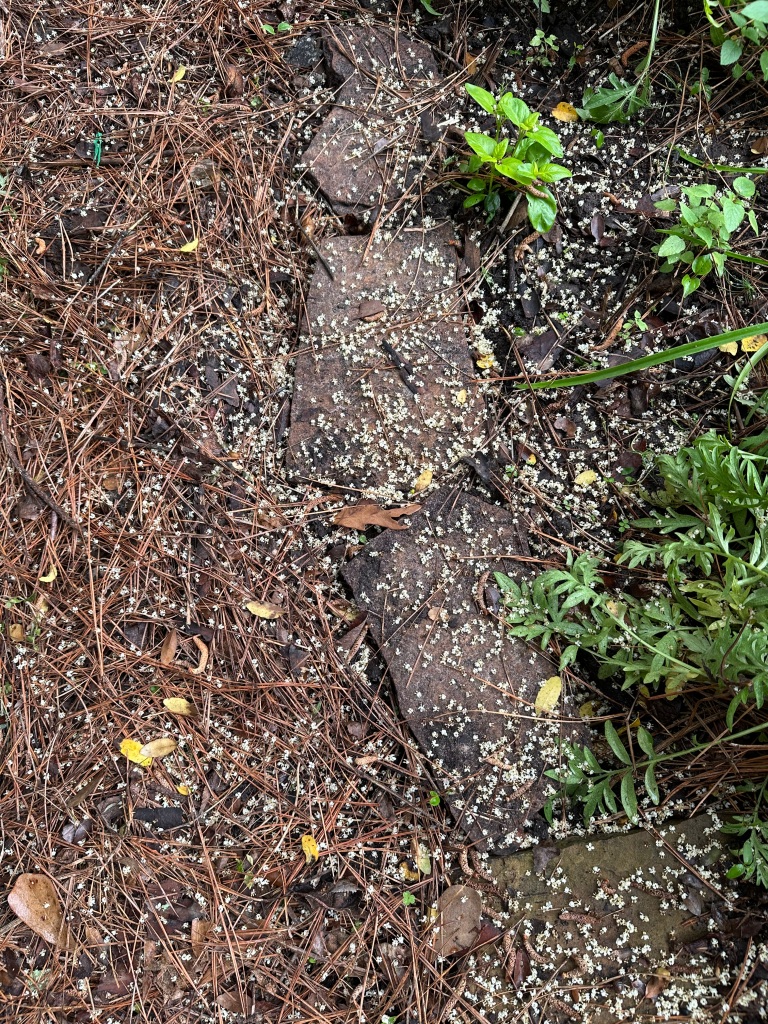
The diminutive flowers cover the ground like snow.
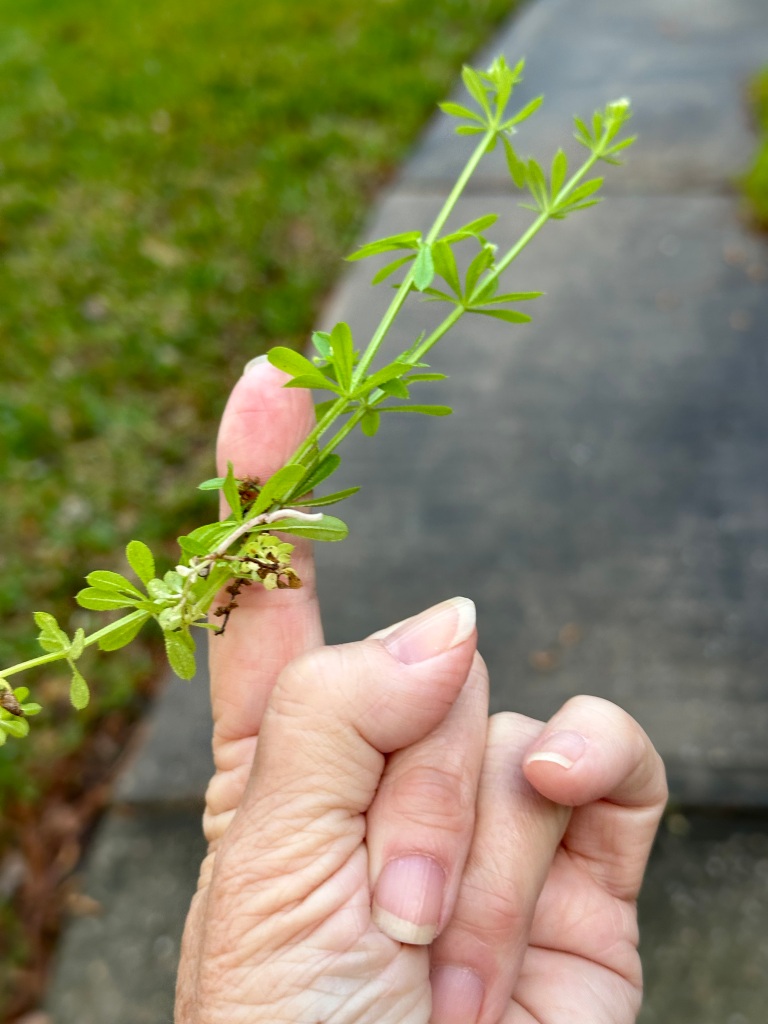
And with spring comes weeds. This is a sticky weed. As I have mentioned before, I don’t take up brain space learning weeds’ proper names. I wish I had counted the bushels of weeds I pulled this spring.
The Comeback
Posted: February 12, 2024 Filed under: Gardening | Tags: Automatic Gardening, Camellia, Gulf Coast gardening, Year-round gardening 21 Comments

Most of the plants in my garden were hit by the hard freeze we had several weeks ago. It was difficult to see them frozen to mush but in almost no time, new shoots were sent up by the still-alive roots.



Happily, the camelias’ tight buds also survived and are now opening. I hate to say that after every freeze I panic a bit my plants will not return but they keep proving me wrong. Thank goodness!
The Aftermath
Posted: January 29, 2024 Filed under: Gardening | Tags: Gulf Coast gardening, hard freeze, Year-round gardening 10 Comments
Maybe I’m being a bit dramatic, but it is hard to see my plants and all my hard work gone.

These are the plants from the post I did before the freeze.

I know most of them will be back, but it will take time.


And now some good news. A couple of baby plants were sheltered and are still alive.


These winter annuals sure can take the cold but will be gone when the heat starts.

Among the frozen plants, the promise of spring is emerging.
Camellias in the Winter
Posted: January 25, 2024 Filed under: Gardening | Tags: Camellia, Professor Sargent Camellia, Shi-Shi Camellia, Southern Gardening, White by the Gate Camellia, Year-round gardening 18 CommentsIt has been a struggle to write a post. We had a freeze one week and 4 or so inches of rain this week. The garden beds are so sad and it is hard to be enthusiastic about gardening. I took some photos of the camellias before the bad weather and seeing beautiful flowers that bloom in the winter should bring some cheer.

This camellia was planted long ago and I do not know its name. I have posted about it before as there was a mistake made at grafting and half of it is white and blooms earlier, then the dark pink side takes over.


Shi-Shi Camellias are the best and reliable bloomers that start flowering around Christmas.

Professor Sargent had an early bloom that was tucked in at the bottom of the shrub.

My favorite White by the Gate made one flower before the weather changed. The big question now is whether the rest of the tight camellia buds survived the freeze and drenching rain.
Out of Sync
Posted: January 15, 2024 Filed under: Gardening | Tags: Gulf Coast gardening, hard freeze, Year-round gardening 23 Comments


My garden is out of sync with Mother Nature. We are expecting temperatures to drop close to the teens this week. Plants are in flower.

Other plants are about to bloom.


And some plants have put out new growth. There are just too many to cover and it will not be pretty, but luckily most the these plants are tough and will come back.
Looks Like Fall Y’all
Posted: December 11, 2023 Filed under: Gardening | Tags: Gulf Coast gardening, seasons, Year-round gardening 15 Comments

As Christmas nears, we do not experience a white Christmas, but a bit of holiday color in our trees. Here are a couple of trees in my backyard and that’s about it for color. Most trees have brown leaves. Unlike up North where the leaves fall off in a certain period of time, ours drop throughout the winter, and raking never ends.
Confederate Rose Time
Posted: November 12, 2023 Filed under: Gardening | Tags: Confederate Rose, Dixie rosemallow, Gulf Coast gardening, Hibiscus mutabilis, Year-round gardening 17 CommentsMy beloved Confederate Rose, Hibiscus mutabilis is blooming. I am very drawn to this shrub and I view it multiple times a day and take scores of photos. I think I do a post on it every year. Enjoy the photos showing the flower changing color throughout the day.




Just in case you would like to see more check out these photos from years past. Here are other names for the Confederate Rose, Cotton Rose, Dixie rosemallow, and Hibiscus mutabilis.








